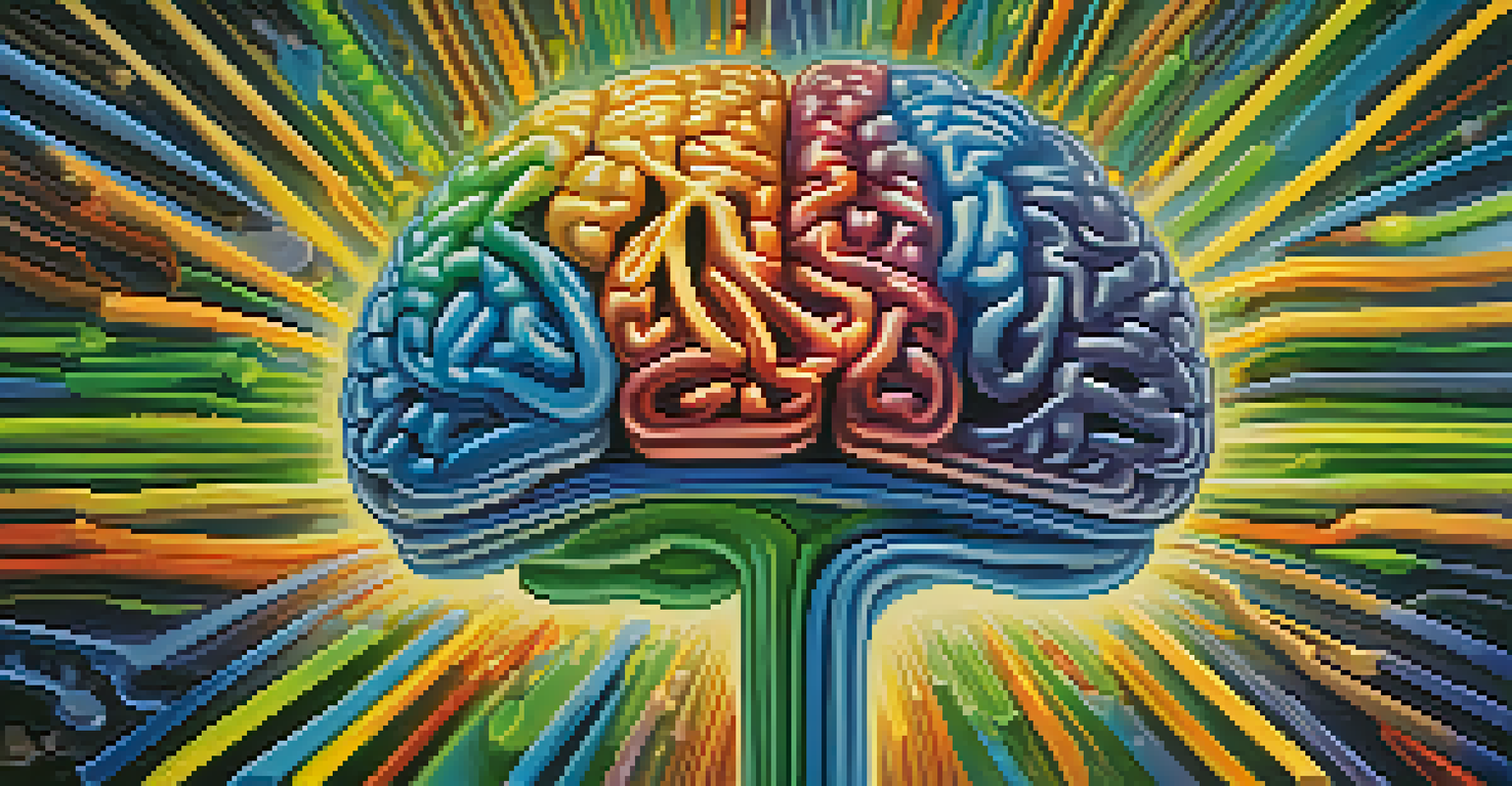Entheogens and Pain: Exploring Altered Perceptions of Pain

What Are Entheogens and Their Historical Use?
Entheogens are substances that can induce altered states of consciousness, often used in spiritual or healing practices. Historically, cultures around the world have utilized these natural compounds, such as psilocybin mushrooms or ayahuasca, for various purposes, including pain relief and emotional healing. By tapping into the mind-body connection, these substances can offer profound insights into one's experience of pain.
The mind is everything. What you think you become.
The use of entheogens dates back thousands of years, with evidence found in ancient rituals among indigenous tribes. These substances were not merely for recreation; they served as tools for understanding the self and the world around them. This historical significance underscores the importance of exploring their potential therapeutic applications in modern medicine.
As we delve into the relationship between entheogens and pain, it’s essential to recognize their role in shaping perceptions and emotional responses. The exploration of these substances can open new avenues for pain management, challenging conventional approaches that often overlook the psychological dimensions of pain.
The Science Behind Pain Perception
Pain is not just a physical sensation; it’s a complex interplay of sensory and emotional experiences. The brain processes pain through various pathways, influenced by factors like past experiences, mood, and environment. Understanding this complexity is crucial for comprehending how entheogens might alter pain perception.

Recent studies suggest that entheogens can affect neurotransmitter systems, particularly serotonin, which plays a significant role in mood regulation and pain perception. By modifying how the brain interprets pain signals, these substances may offer a unique approach to pain relief that complements traditional methods. This opens the door to addressing pain from a holistic perspective.
Entheogens Offer Pain Relief Insights
These substances may provide new approaches to pain management by addressing both physical and emotional aspects of pain.
Furthermore, the subjective nature of pain means that two individuals can experience the same injury very differently. This variability highlights the potential for entheogens to help individuals reshape their narratives around pain, potentially leading to more effective coping strategies and relief.
Entheogens and Emotional Healing
Many people experience pain not just physically but also emotionally, and entheogens have shown promise in addressing this connection. By facilitating deep emotional releases and insights during experiences, these substances can help individuals confront and process underlying traumas that may exacerbate pain. This emotional healing can lead to a significant reduction in perceived pain levels.
The greatest discovery of my generation is that a human being can alter his life by altering his attitudes.
For example, someone dealing with chronic pain due to a past traumatic event may find that an entheogenic experience allows them to confront those feelings, leading to a lighter emotional load and lessened pain perception. It’s a transformative process that emphasizes the importance of emotional well-being in physical health.
The journey through emotional healing is often not linear, but many report lasting changes in their relationship with pain. As individuals undergo these experiences, they may develop new coping mechanisms that help them manage their pain more effectively in everyday life.
Case Studies: Real-Life Experiences with Entheogens
Numerous anecdotal reports and case studies highlight the potential for entheogens to alleviate chronic pain. For instance, some individuals suffering from fibromyalgia have shared their transformative journeys, where guided sessions using psilocybin led to significant pain relief and improved quality of life. These personal stories bring a human element to the scientific exploration of these substances.
One notable case involved a patient with terminal cancer who used ayahuasca in a therapeutic setting. Not only did they report reduced physical pain, but they also experienced a profound sense of peace and acceptance regarding their condition. Such accounts illustrate the multidimensional impact of entheogens on both physical and emotional pain.
Historical Use Supports Modern Research
Ancient cultural practices highlight the potential therapeutic applications of entheogens, encouraging current scientific exploration.
While these stories are compelling, they also highlight the need for more rigorous scientific research to validate these experiences. As the stigma around entheogens continues to diminish, the scientific community is beginning to take notice, paving the way for more studies that could unlock their full potential in pain management.
Potential Risks and Considerations
While entheogens offer promising benefits, they are not without risks. Individuals with a history of mental health issues may experience adverse effects, such as increased anxiety or paranoia during an altered state. Thus, it’s crucial to approach their use with caution and ideally under the guidance of trained professionals.
Setting and context play a significant role in the experience and outcomes associated with entheogens. A supportive environment can enhance positive effects, while a negative or chaotic setting might lead to challenging experiences. This underscores the importance of preparation and proper integration following any entheogenic experience.
It’s also essential to remember that entheogens are not a one-size-fits-all solution. Each person's journey is unique, and what works for one individual may not work for another. Thus, a comprehensive approach to pain management should incorporate various strategies, including lifestyle changes and traditional therapies, alongside any potential use of entheogens.
Integration: The Aftermath of Entheogenic Experiences
Post-experience integration is a vital step in maximizing the benefits of entheogens. This process involves reflecting on the insights gained during the experience and finding ways to incorporate these lessons into daily life. Many people find that journaling, therapy, or support groups can help them make sense of their experiences and apply them to their pain management strategies.
Integration provides a bridge between the profound realizations experienced during an entheogenic journey and the practicalities of everyday life. It encourages individuals to explore new coping mechanisms or lifestyle changes that can help sustain the benefits of their experience long-term. This can include mindfulness practices, physical activities, or alternative therapies that align with their newfound understanding.
Integration is Key for Healing
Post-experience integration helps individuals apply insights gained from entheogenic experiences to their everyday pain management strategies.
Ultimately, effective integration fosters a deeper understanding of one’s pain and empowers individuals to take an active role in their healing journey. By transforming insights into actionable steps, individuals can create a more resilient and empowered relationship with their pain.
The Future of Entheogens in Pain Management
As research into the therapeutic potential of entheogens expands, we are beginning to see a shift in attitudes toward their use in pain management. Clinical trials are underway, exploring various compounds and their efficacy in treating conditions like chronic pain and PTSD. This scientific inquiry could lead to a more profound understanding of how these substances can be safely and effectively integrated into treatment protocols.
Moreover, as more individuals share their positive experiences, the conversation surrounding entheogens continues to evolve. Societal perceptions are gradually shifting, with a growing acknowledgment of the need for alternative approaches to pain management. This cultural change may pave the way for a broader acceptance of entheogens in therapeutic settings.

The future holds exciting possibilities for those seeking relief from chronic pain. With ongoing research and the potential for innovative treatment approaches, entheogens may play a significant role in reshaping our understanding of pain and healing in the years to come.